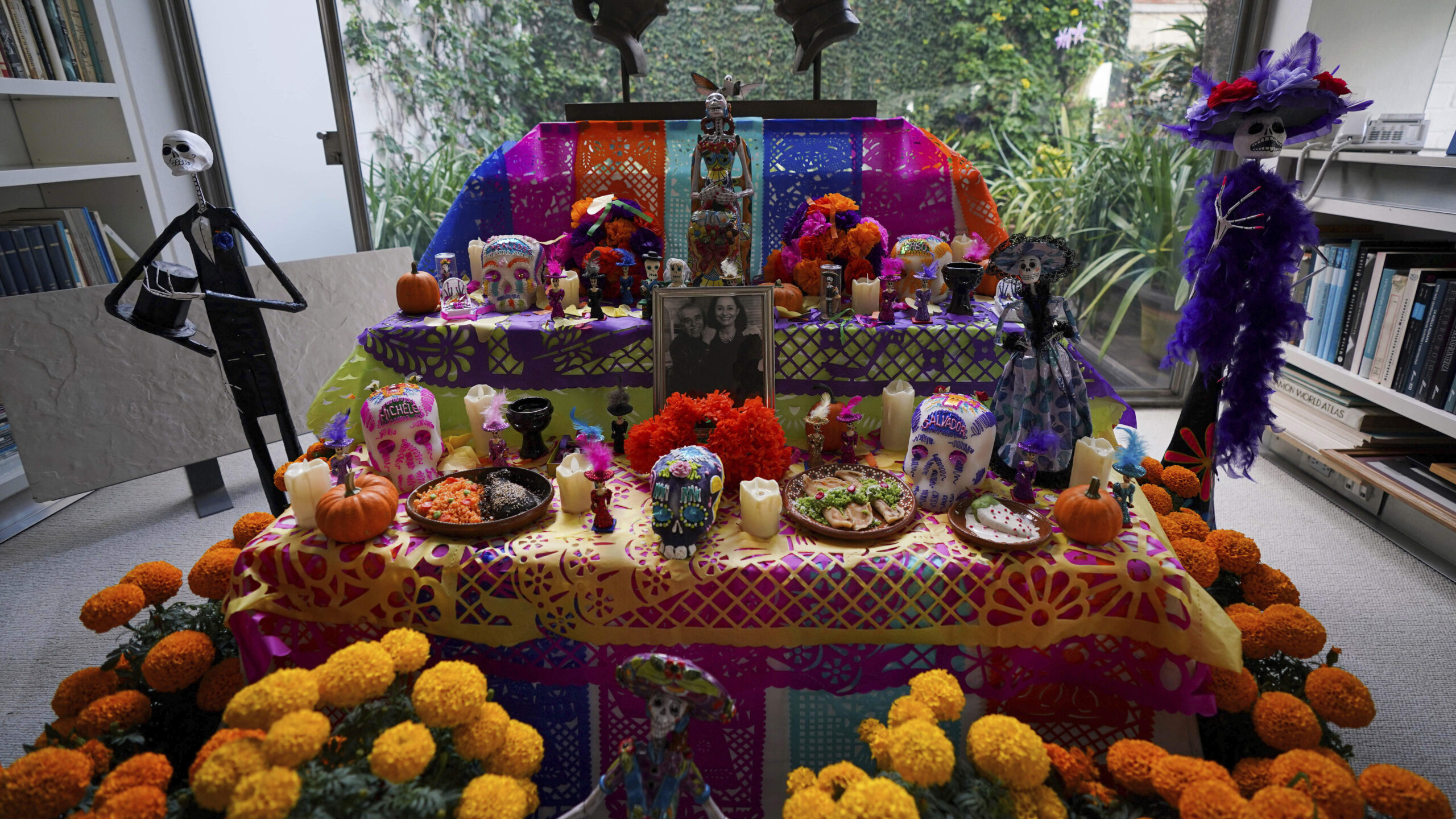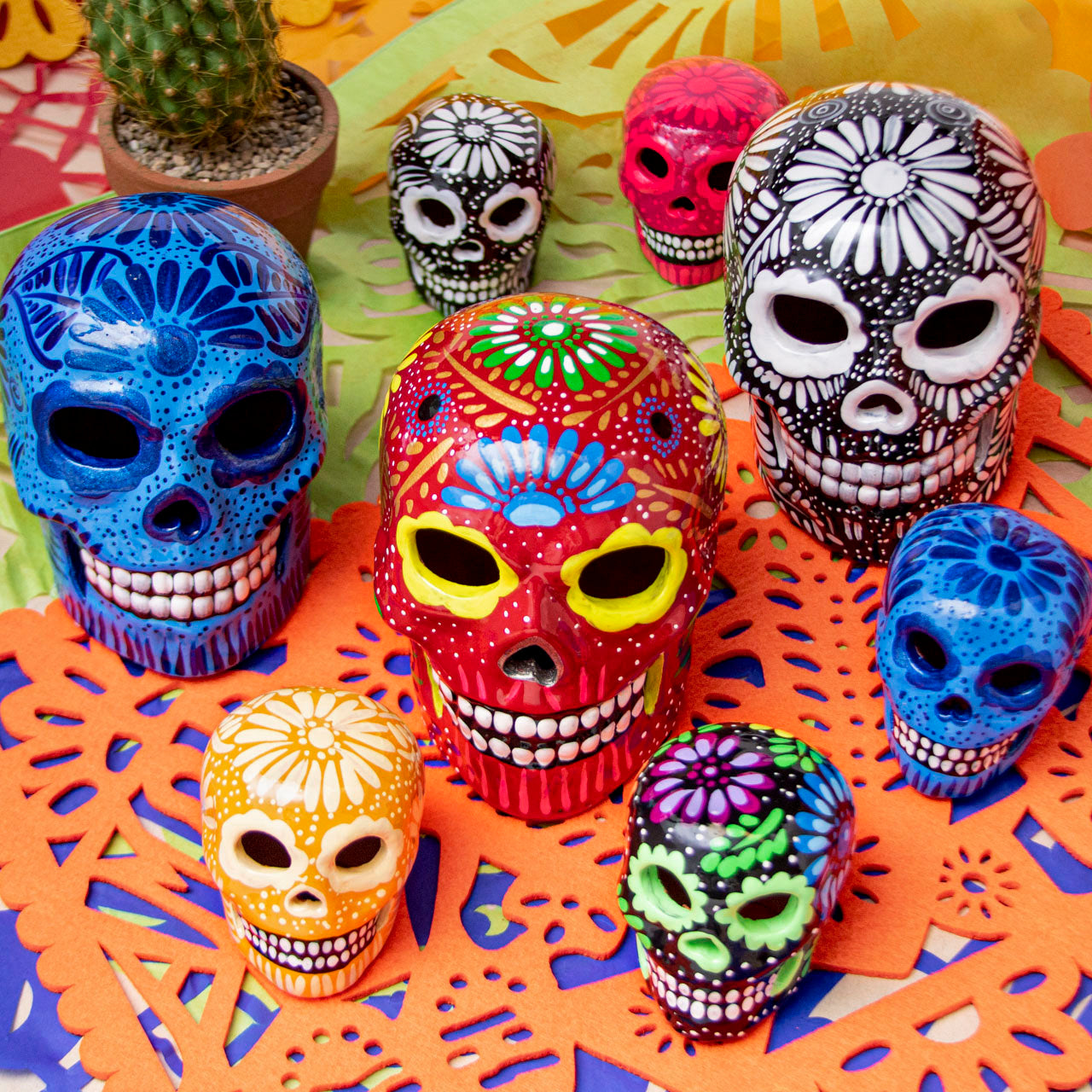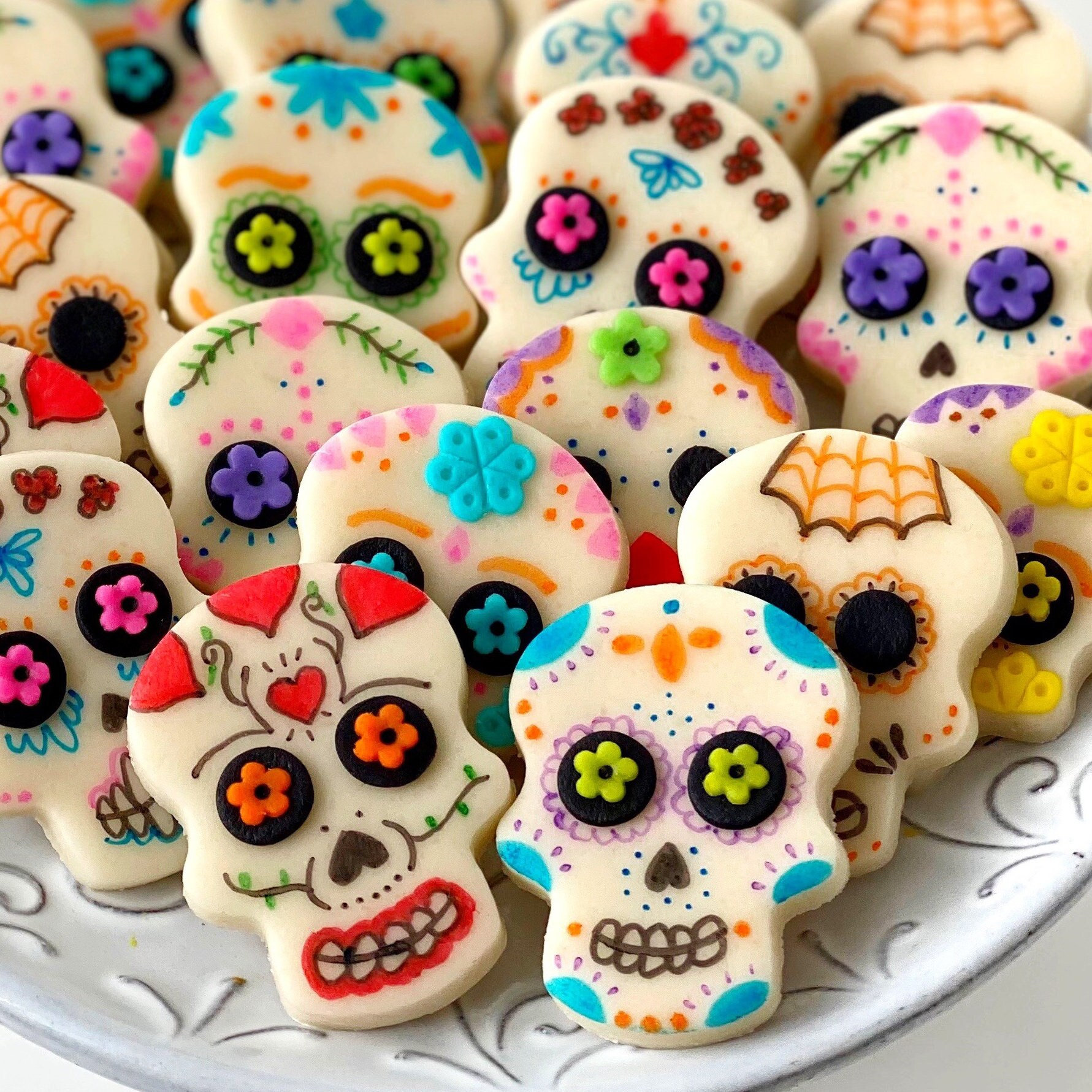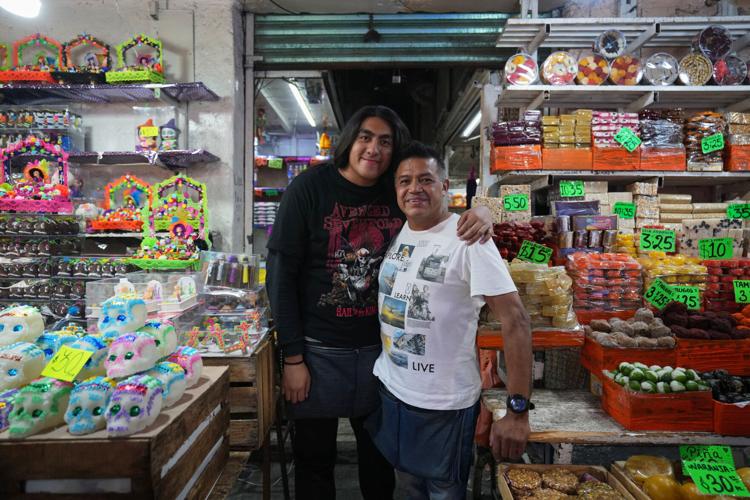Introduction
The vibrant and deeply meaningful festival of Día de los Muertos (Day of the Dead) in Mexico is widely known for colourful altars, marigolds, candlelit vigils and joyous remembrance of loved ones who have passed away. Among these rich traditions, one of the most striking visual and edible icons is the sugar skull (or “calavera de azúcar”) — a sweet treat that transforms the idea of death into a celebration of life.
In this article, we explore how the sugar skull came to be, what it symbolises, how it’s made, its place in modern culture, and how it continues to bridge memory, craft and community in Mexico.
1. Roots in Remembrance: The Origins of Day of the Dead
To understand why sugar skulls exist, one needs to grasp the origins of the festival itself.
Día de los Muertos takes place chiefly on 1 and 2 November, honouring deceased children and adults respectively.
The celebration draws from pre-Hispanic Mesoamerican traditions (for instance the Aztecs) that honoured death as part of life, not something solely to fear.
The arrival of Spanish colonisers brought new materials (such as cane sugar) and mold-making techniques that merged with indigenous customs to give us the sugar figures we see today.
Thus, what seems like a simply sweet treat actually carries layers of cultural memory, ritual symbolism and artistic craft.
2. What Are Sugar Skulls (Calaveras de Azúcar)?
Sugar skulls (known in Spanish as calaveras de azúcar) are skull-shaped confections made from moulded sugar, often decorated with colourful icing, foil, glitter, and sometimes the name of a deceased person.
Bright, cheerful faces — the skulls smile, wear vivid colours and carry names on their foreheads.
They serve more as symbols of remembrance rather than simply edible sweets. Many are placed on altars (ofrendas) or graves.
Shapes and decorations vary by region, by artisan, and by purpose (for children’s altars vs adult altars).
3. Symbolism: Why Skulls, Why Sugar?
At first glance, sugar-skulls and skull imagery might seem odd in a festival of life and death. But the symbolism is rich:
The skull – calavera – is a reminder of mortality, a memento mori, but in the context of Día de los Muertos it is transformed into a joyful face rather than a fear-filled one.
The sugar reflects sweetness, celebration, and also the transitory nature of life (since sugar moulds will eventually melt or crumble).
Often the skulls bear the name of the deceased — this personalises the offering and honours the individual.
The use of skulls, food and drink connects the living with the dead: the deceased are invited back, if only symbolically, to share once more in the joys of life.
4. How Sugar Skulls Are Made: The Craft and Process
The making of sugar skulls is a traditional craft, typically seasonal, and goes through several steps:
Mixing sugar with water and often lemon juice or egg white so the sugar holds the shape in moulds.
Pouring the sugar syrup into skull-shaped moulds, leaving to set and harden.
Demoulding and drying – sometimes several days before decoration begins. For example, one artisan reported starting production months ahead of the festival.
Decorating – with colourful icing, foil, glitter, sometimes feathers, sometimes names written on the forehead.
Distribution/sale in markets — for instance during the annual Feria del Alfeñique in Toluca, which features sugar skulls of many sizes.
It’s worth noting that though they can be eaten, many sugar skulls are kept for decoration or placed on altars rather than consumed.
5. Regional Traditions and the Feria del Alfeñique 

6
In Mexico, certain cities are hubs for sugar-skull production and trade. One example:
The Feria del Alfeñique in Toluca (State of Mexico) is an annual fair where vendors display and sell sugar skulls and other confectionery figures in the weeks leading up to Día de los Muertos.
The term alfeñique itself originates from the Spanish-Arabic confectionery tradition (“al-fānīḏ”) and was adapted into sugar figurine making in Mexico.
At such fairs, size, decoration and artistic style vary widely, and competitions may be held for the best pieces.
This shows how the tradition is not only spiritual but also commercial, artistic and socially shared.
6. Altars, Offerings and the Role of Sugar Skulls 


6
Sugar skulls are primarily placed on altars — known as ofrendas — and at gravesites, playing a specific role:
Families set up altars with candles, marigolds (cempasúchil), favourite foods of the deceased, water, incense, and sugar skulls.
The skulls represent the departed soul, especially when the name is written on them. In some traditions, smaller skulls are for children’s souls, larger for adults.
Placement on graves: in some communities, families spend the night at cemeteries, decorating the tombs, often with sugar skulls among other offerings.
By serving as both decoration and offering, sugar skulls help connect the living and the dead, honouring memory in a tangible way.
7. The Joyful, Not Morbid, Tone
It’s important to emphasise: Día de los Muertos is not a morbid or sorrow-filled festival. It is joyous, colourful, and life-affirming.
The bright, smiling sugar skulls reflect a tone of celebration rather than fear.
As one tourist guide noted: families might bring food, music, candlelit vigils and even revelry in cemeteries. The sugar skulls are part of a communal embrace of mortality and memory.
The cheerful skulls challenge the usual taboo around death in Western-style cultures and invite us to remember loved ones with warmth.
8. Contemporary Culture, Commerce and Global Reach 


6
The sugar-skull tradition has evolved and spread beyond its traditional roots:
In Mexican cities you’ll find sugar skulls in markets, sweet shops, souvenir stalls in the weeks leading up to 1–2 November.
They have become part of the tourism offering: visitors buy them for friends or as keepsakes.
Artisan labour is under strain: according to one source, only about ten families may now comprise the traditional full-time sugar-skull producers in some regions, reflecting changing economics and competition from mass-produced versions.
Outside Mexico, sugar skull imagery influences fashion, design, and Halloween crossover events — though cultural sensitivity is important.
9. How to Experience and Appreciate Sugar Skulls Respectfully
If you encounter sugar skulls or wish to use them in décor, gifts or celebrations, here are some friendly guidelines:
Recognise their cultural meaning: they are not mere costume props but symbols of remembrance and respect for the ¡ Día de los Muertos tradition.
If visiting Mexico during the festival, visit local markets in late October for authentic sugar skulls.
Consider buying from artisan makers rather than generic souvenirs — this supports the tradition and craftsmanship.
If using sugar skull motifs outside the festival, use them in ways that acknowledge their meaning rather than trivialising them.
If you see one with a name on it, understand it may represent a specific remembered soul and be placed on an altar — disposal or consumption should be done thoughtfully. Reddit commentary suggests some families keep skulls year-to-year or use them as sugar in drinks.
10. Making Sugar Skulls at Home (Simplified)
For those who’d like to try making a sugar skull at home (for personal use, craft, or with children), here’s a simplified overview:
Mix granulated sugar with a little water (and in some versions egg-white or meringue powder) until the sugar holds shape.
Pack the mixture into skull-shaped moulds, press firmly, scrape level.
Demould after a short time and allow to dry for a day or more to harden.
Decorate using coloured icing, edible foil, glitter, and mark a name if desired.
Display on an altar or as part of a celebration; if eaten, do so with awareness of how it was used.
While this is a craft project, the deeper value lies in understanding its roots and symbolism.
Conclusion
The striking image of a cheerful skull made of sugar, vivid in colour and crowned with a name — this is the heart of how Mexico’s Day of the Dead turns skulls into joyful sugar treats. The sugar skull embodies memory, craft, culture and the celebration of life in the face of death. It invites us not to fear, but to remember; not to mourn invisibly, but to celebrate tangibly. From the hands of artisan makers in Toluca and beyond, to the altars set in homes and cemeteries, the sugar skull is a small but mighty emblem of a festival that honours the past, embraces the present and affirms the continuity of connection.
In the end, when you see a sugar skull this season, let it remind you of the sweetness of memory, the colour of commemoration, and the enduring bond between life and what lies beyond.

No comments:
Post a Comment